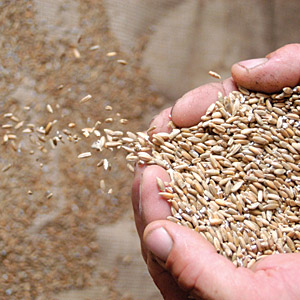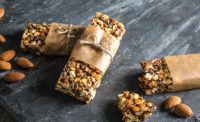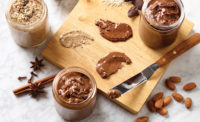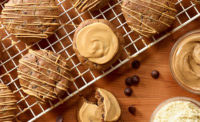 Bakers are always looking for new ways to add value to their baked goods, and nuts and seeds are a great way to do so. Nuts and seeds are high in fiber and healthy fats as well as in many other nutrients.
Bakers are always looking for new ways to add value to their baked goods, and nuts and seeds are a great way to do so. Nuts and seeds are high in fiber and healthy fats as well as in many other nutrients.Although considerable research confirms the nutritional value of tree nuts and legumes, many Americans are still wary of their high-fat and high-caloric content. A 2013 PREDIMED study of 7,210 men and women (mean age of 67) reveals, however, that nut consumption is inversely associated with the prevalence of general obesity, central obesity, metabolic syndrome and diabetes in subjects at high cardiovascular risk.
Meanwhile, a 2007 meta-analysis in the Journal of Nutrition concluded that many of the calories from tree nuts and peanuts are not absorbed by the body. This meta-analysis reported epidemiological studies showing an inverse relationship between the intake of nuts and body mass index (BMI).
Clinical trials have revealed that moderate consumption of nuts in a weight-loss regime increases compliance and often results in a greater weight loss. There is some evidence that actual caloric absorption may be as much as 10-20% less than the estimated caloric value. Such good news should prompt bakers and snack producers to consider adding more nuts and seeds to their muffins, tortillas, breads, desserts and snack foods.
One of the most popular and commonly used “nuts”—the peanut—is actually a legume that offers many of the same nutritional benefits of tree nuts. Pecans, walnuts, almonds, cashews, macadamias, pistachios, Brazil nuts and other nuts have very similar nutritional profiles. Exact nutrition content can be accessed at the U.S. Department of Agriculture’s (USDA) National Nutrient Database.
While seeds such as poppy, sunflower and chia are also nutritional powerhouses, they must be added to foods in significant amounts to make a nutritional difference. Poppy seeds can be added to all kinds of baked goods, from breads to desserts. A known favorite is the almond poppy seed muffin or snack cake, which combines a nut and a seed. (It’s important to remember that drug testing soon after consuming poppy seeds is not a good idea.) Poppy seed paste is a great addition to croissants, layered cakes, filled snack cakes and ethnic favorites such as kolachkys.
Sunflower seeds offer great nutrition in the way of unsaturated fats, high fiber, zinc, folate, selenium, protein, phytochemicals (beneficial plant chemicals) and vitamin E. Sunflower “butter” is also becoming more popular and can be substituted for peanut butter to make unique, delicious baked specialty products.
Many of us remember Chia Pets from the last century. Today, chia seeds are quite the novel ingredient for many baked goods. They’re high in dietary fiber and complete proteins as well as gluten-free. Chia seeds can be ground into a meal and used as a partial substitute for other cake flours. They also have been used as a cornmeal substitute in corn tortillas and are very good at increasing tortillas’ nutritional profile as well as being sensory acceptable.
Research has also been conducted in which up to 10% of wheat flour in bread was replaced with chia meal and added gluten. “Team Chia Muffin” was a finalist in the 2011 Student Division Product Development Competition at the annual AACCI International (formerly the American Association of Cereal Chemists) meeting, so chia obviously can be used in a variety of baked goods.
Flaxseed is known for its high fiber content and Omega 3 fatty acids. Walnuts are also a good source of Omega 3.
When it comes to increasing the nutritional profiles of their baked goods and their sales, many bakers and snack producers are discovering that small ingredients like nuts and seeds can produce big results.




